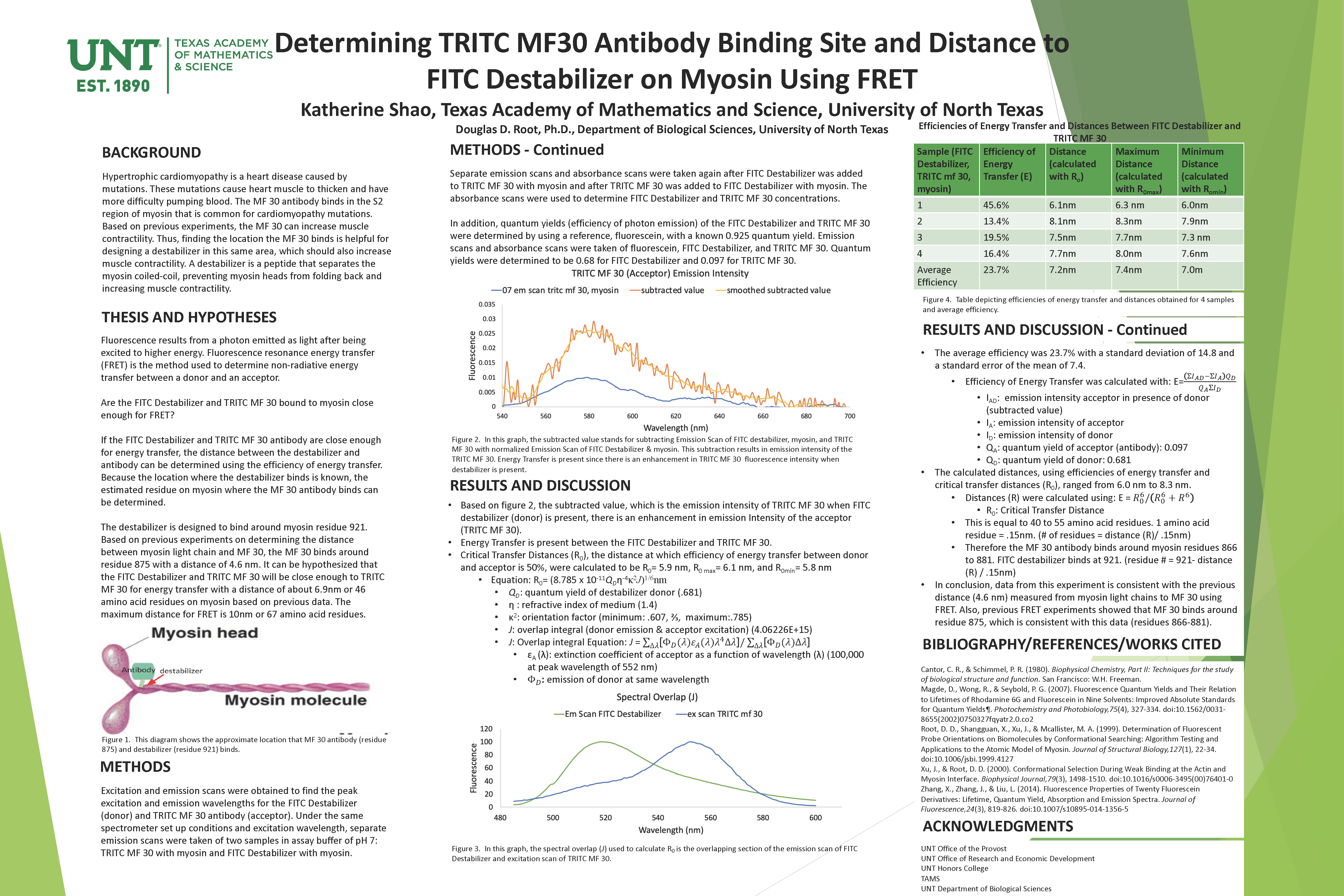First Name:
KatherineLast Name:
ShaoMentor:
Dr. Douglas RootAbstract:
Heart diseases like hypertrophic cardiomyopathy, caused by mutations, make it difficult for cardiac muscle to pump blood. Previous experiments showed that the MF 30 antibody, which binds in a region common for cardiomyopathy mutations, increases muscle contractility. This project uses fluorescence resonance energy transfer (FRET), a technique that measures non-radiative energy transfer between donor and acceptor fluorescent molecules, to test for energy transfer and find the myosin residues that the MF 30 binds on. Because the FITC destabilizer, the donor, is designed to bind to residue 921, the residues the TRITC MF 30 antibody, the acceptor, binds on are calculated by using the distances between the donor and acceptor. Critical transfer distance, quantum yields, and efficiency of energy transfer were also necessary to calculate the distances. It was determined that the MF 30 is 6 to 8.3nm from the destabilizer or 40 to 55 amino acid residues. Therefore, the MF 30 binds around residues 866 to 881 on myosin. These results are consistent with previous FRET experiments from myosin light chain to the MF 30 antibody. With this antibody binding location information, future experiments involve designing and testing a new destabilizer in this area for increased contractility and how it affects myosin's coiled-coil structure. A destabilizer a peptide that disrupts myosin’s coiled-coil and prevents myosin heads from folding back into a conformation that inhibits their binding to actin during muscle contraction. Eventually, this can lead to drugs or treatments for hypertrophic cardiomyopathy or other muscle diseases by increasing muscular contraction.Poster:





